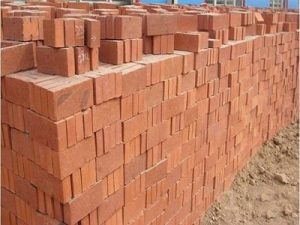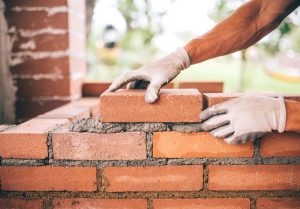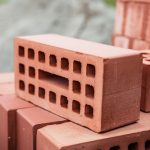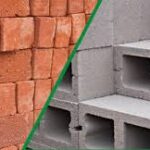Best Cement and Bricks for House Construction in India
Building a home is more than just a project; it’s the realization of a lifelong dream. Every brick laid and every layer of cement applied plays a vital role in turning that dream into a structure that stands strong for generations. In India, where climatic conditions and soil types vary across regions, choosing the right cement and bricks is not just a matter of preference but of precision and durability.
From the enduring strength of Portland cement to the earthy charm of clay and fly ash bricks, each material contributes uniquely to the foundation and finish of your home. The best combinations offer a balance of strength, insulation, and sustainability, ensuring that your space remains beautiful, safe, and resilient. Whether you’re building a modern city home or a traditional rural haven, understanding the right mix of cement and bricks can make all the difference in crafting a structure that truly lasts. Bricks manufacturers are at your service to give you the right home-building process.
Range of Cement Offered in India
Cements are no strangers to all the stories of the homes that are built each day in the country, giving rise to so many new stories, laughs, late-night chats, happy rituals, and tales that are creating a legacy for the house to live with for many, many years. Here are all the types of cement offered in India to fabricate the house you wish to enjoy all your life.
Ordinary Portland Cement
Ordinary Portland Cement is the most commonly used cement type, known for its versatility and reliability. It is ideal for general construction purposes like buildings, roads, and bridges.
OPC 33 Grade (33 MPa)
OPC 33 Grade Cement offers a compressive strength of 33 MPa after 28 days. It’s ideal for low-rise buildings, plastering, and general construction work where high strength isn’t crucial.
OPC 43 Grade (43 MPa)
With a strength of 43 MPa, this grade suits residential, commercial, and structural work like slabs and beams, offering balanced strength and durability.
OPC 53 Grade (53 MPa)
Delivering 53 MPa strength, it’s used for large-scale and high-strength projects such as bridges, high-rises, and industrial structures, ensuring rapid setting and superior performance.
Blended Cements
Blended Cement is made by mixing Ordinary Portland Cement with supplementary materials like fly ash, slag, or pozzolans. It enhances durability, reduces the heat of hydration, and is eco-friendly for sustainable construction.
Portland Pozzolana Cement (PPC)
Portland Pozzolana Cement (PPC) is a blended cement made by mixing Ordinary Portland Cement (OPC) with pozzolanic materials like fly ash, volcanic ash, or calcined clay. This combination enhances the cement’s durability, reduces permeability, and makes it resistant to chemical attacks such as sulphates.
Portland Slag Cement (PSC)
Portland Slag Cement (PSC) is produced by blending Ordinary Portland Cement (OPC) with granulated blast furnace slag, a by-product of the steel industry. Known for its excellent resistance to chemical corrosion and low heat of hydration, PSC is perfect for coastal, marine, and industrial construction.
Specialized Cements
Specialized Cements are engineered for specific construction needs, offering unique properties such as rapid setting, sulfate resistance, or high heat tolerance. They are ideal for challenging environments, industrial structures, and projects requiring enhanced durability and performance.
White Cement
White Cement is similar to Ordinary Portland Cement but is manufactured using raw materials low in iron oxide and manganese, giving it a bright white color. It’s primarily used for decorative works, architectural finishes, flooring, and precast panels where aesthetics and a smooth, clean appearance are important.
Sulfate-Resisting Cement (SRC)
Sulfate-Resisting Cement is specially formulated to resist sulfate attacks, which can damage concrete in soils or groundwater rich in sulfates. It contains lower amounts of tricalcium aluminate to enhance durability. Ideal for foundations, coastal structures, and sewage treatment plants exposed to aggressive sulfate environments.
Rapid Hardening Cement
Rapid Hardening Cement gains strength much faster than Ordinary Portland Cement, making it ideal for projects requiring early load-bearing capacity. It is commonly used in road repairs, precast concrete, and cold weather construction, where quick setting and high early strength are crucial.
Low-Heat Cement
Low-Heat Cement is designed to release less heat during hydration, reducing the risk of thermal cracking in large concrete structures. It’s best suited for massive constructions like dams, retaining walls, and large foundations where temperature control and structural integrity are critical.
High Alumina Cement
High Alumina Cement is made from limestone and bauxite and contains a high percentage of alumina. It develops high early strength and resists chemical corrosion and high temperatures. Commonly used in refractory applications, marine structures, and environments with high chemical exposure.
Expansive Cement
Expansive Cement is formulated to expand slightly after setting, compensating for shrinkage and reducing cracking. It’s useful in grouting, prestressed concrete, and watertight structures like reservoirs or bridges, ensuring tight joints and enhanced structural durability.
All the Bricks Offered in India
Every brick tells us a story, and with every home that they contribute to, they fabricate a beautiful new adaptation of the stories that originated in the minds of the people living in that house. The nuances, laughs, and these bricks witness major decisions made; it is essential to know all the bricks that have the power to evoke all the feels in your own home.
Sun-dried bricks
Made by drying clay naturally under the sun, these bricks are eco-friendly and cost-effective. They are suitable for low-strength structures and rural constructions. They are the most naturally formed bricks with the least amount of drying hours required.
Burnt clay bricks
Kiln-fired clay bricks are known for their strength and durability, ideal for walls, foundations, and load-bearing structures. They burn away all the unnecessary things with the clay power they support the house with.
Fly ash brick
Manufacturers use fly ash, cement, and water; they are lightweight, eco-friendly, and provide good thermal insulation to have the best building process. lightweight, strong, and offer superior thermal and sound insulation, which reduces energy costs in buildings. Their production is more energy-efficient and creates less waste than manufacturing clay bricks, making them a greener option.
Concrete block
Made from cement, sand, and aggregates, these blocks are strong, durable, and widely used in modern construction for walls and partitions. They are made by mixing cement, sand, and water, and their high density and compressive strength make them a popular choice for load-bearing structures and in areas prone to extreme weather.
Engineering bricks
Dense, high-strength bricks with low water absorption, suitable for structural applications and damp-prone areas. They can be more waterproof than your roof tiles. They have core holes for a stronger bond.
Sand lime bricks
Produced by mixing sand and lime, then curing under steam, these bricks have smooth surfaces and good compressive strength. They are used in ornamental and masonry projects and have benefits like reducing plastering needs, providing good insulation, and offering accurate shapes and sizes with straight edges.
Porotherm bricks
Hollow clay bricks with vertical perforations provide excellent thermal insulation and reduced dead load for walls. This is due to their hollow structure, making them energy-efficient for buildings. They are also durable, have low water absorption, and are approved for green building certifications, making them a sustainable construction material.
Fire brick
Heat-resistant bricks used in furnaces, fireplaces, and kilns, capable of withstanding very high temperatures. Also called refractory bricks. Crushed firebricks can be used as an aggregate in concrete, and studies show they can even increase the compressive strength of the concrete.
Hollow bricks
Lightweight bricks with hollow cavities that improve insulation and reduce structural weight, often used in non-load-bearing walls. They are a modern construction material with built-in advantages over traditional solid bricks, including being lightweight, energy-efficient, and soundproof.
Glazed bricks
Bricks with a ceramic glaze coating provide decorative appeal, water resistance, and easy maintenance for exterior walls.. The colorful, glossy finish of these bricks, achieved by fusing a glass-like ceramic glaze to their surface, makes them a timeless and versatile architectural material.
Paving bricks
Durable, hard-wearing bricks used for driveways, walkways, patios, and outdoor flooring, often designed to resist heavy traffic. These bricks are made from natural materials, are considered environmentally friendly and recyclable, and can maintain their color for years, unlike some concrete pavers that can fade
Frequently Asked Questions
Which cement brand is best for house construction in India?
Popular and reliable brands include Bharat Bricks, Ultratech, ACC, Ambuja, Dalmia, Shree Cement, and JK Cement, known for strength and durability.
Which brick type is best for house construction, clay or fly ash?
Clay bricks are traditional and strong, while fly ash bricks are eco-friendly, lightweight, and cost-effective. The choice depends on project needs and budget.
What is the ideal grade of cement for house construction?
For most residential structures, OPC 43 Grade or PPC is ideal. For heavy structures like beams and slabs, 53 Grade OPC may be used.
Can I mix different types of cement in one construction project?
It’s best to avoid mixing types in the same structural component, but different grades can be used for different sections as per structural needs.
What are the environmental benefits of using fly ash or AAC blocks?
They utilize industrial waste, reduce soil erosion, and provide better thermal insulation — making construction more sustainable.







